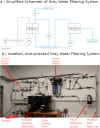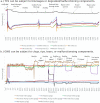Reinforcement learned adversarial agent (ReLAA) for active fault detection and prediction in space habitats
- PMID: 36781914
- PMCID: PMC9925772
- DOI: 10.1038/s41526-023-00252-9
Reinforcement learned adversarial agent (ReLAA) for active fault detection and prediction in space habitats
Abstract
With growing interest for human space tourism in the twenty-first century, much attention has been directed to the robust engineering of Environmental Control and Life Support Systems in space habitats. The stable, reliable operation of such a habitat is partly achieved with an ability to recognize and predict faults. For these two purposes, a reinforcement learning adversarial agent (ReLAA) is utilized in this work. A ReLAA is trained with experimental data to actively recognize and predict faults. These capabilities are achieved by proposing actions that activate known faults in a system. Instead of issuing these harmful actions to the actual hardware, a digital twin of the mock space habitat is simulated to discover vulnerabilities that would lead to faulted operation. The methods developed in this work will allow for the discovery of damaging latent behavior, and the reduction of false positive and negative fault identification.
© 2023. The Author(s).
Conflict of interest statement
The authors declare no competing interests.
Figures






References
-
- Beard, S. S. & Starzyk, J. Space tourism market study: orbital space travel & destinations with suborbital space travel. 1–72 (Futron Corp., 2002).
-
- UBS Investment Bank. Future of Space Tourism: Lifting Off? Or has COVID-19 stunted adoption? 20 July. https://www.ubs.com/global/en/investment-bank/in-focus/2021/space-touris... (2021).
-
- Tang, S. et al. Operation-aware ISHM for environmental control and life support in deep space habitants. 10.2514/6.2018-1365 (2018).
Grants and funding
- 80NSSC-20-C-0129/National Aeronautics and Space Administration (NASA)
- 80NSSC-20-C-0129/National Aeronautics and Space Administration (NASA)
- 80NSSC-20-C-0129/National Aeronautics and Space Administration (NASA)
- 80NSSC-20-C-0129/National Aeronautics and Space Administration (NASA)
- 80NSSC-20-C-0129/National Aeronautics and Space Administration (NASA)
LinkOut - more resources
Full Text Sources

